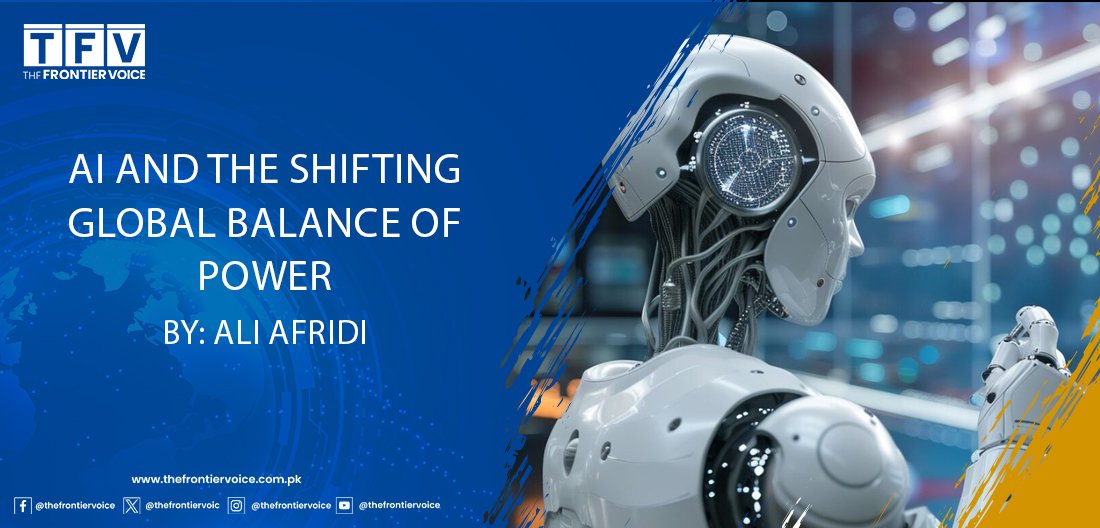FEATURES ARTICLES
AI and the Shifting Global Balance of Power

By: Ali Afridi
The recent rise of DeepSeek, a Chinese startup, has caused quite a stir in the global tech scene, signaling a shift in the AI landscape that could rival the dominance of Silicon Valley giants. DeepSeek’s groundbreaking advancements in AI are sparking intense debate and have the potential to challenge, or even surpass, the innovations emerging from the US. This development marks a critical moment in the ongoing rivalry between the US and China, with both nations pushing harder than ever to lead the AI sector. As the competition intensifies, it could result in a significant realignment of global power, with China’s drive for technological dominance growing stronger, while the US must reassess its strategies to maintain its foothold in the AI race.
The tech rivalry between the US and China is shaping up to be even more complex than the Cold War-era space race. The stakes today are much higher, and this digital arms race is poised to alter the course of global politics, impact international relations, and redefine national security strategies. There’s growing concern that this competition might eventually lead to AI-driven conflicts, with serious consequences for global peace and stability. Under the leadership of President Donald Trump, the US has accelerated its efforts to preserve its technological edge, with private sector investments of up to $500 billion in AI infrastructure. On the other side, China has committed to an ambitious $8.2 billion AI fund, especially in response to the US’s restrictions on chip exports. This fierce rivalry is fueling rapid AI advancements, with Chinese tech behemoths like Baidu, Alibaba, and Huawei making notable strides in generative AI and natural language processing.
As the US and China race to develop next-generation AI technologies, there’s growing concern about the role AI could play in modern warfare. AI-powered tools and weapons are becoming increasingly sophisticated, reshaping military strategies and global security. The integration of AI into warfare is enhancing intelligence gathering, improving operational planning, and enabling precision strikes with unprecedented accuracy. AI’s role in defense operations is changing the face of military conflict. The ability of AI systems to process vast amounts of data for decision-making, analyze battlefield intelligence, and optimize operations is revolutionizing how military forces operate. But with the growing reliance on AI, there are increased risks of conflict escalation, including the potential for nuclear threats. AI-guided drones and missiles are already being used for targeted strikes, while AI tools are also at the forefront of cyberattacks, disrupting vital infrastructure.
The ongoing conflicts in places like Gaza and Ukraine serve as real-world examples of how AI is shaping modern warfare. For instance, the Israel Defense Forces (IDF) are using AI to swiftly identify and target threats, while the Russia-Ukraine war has underscored the role of AI in cyber warfare and information operations. These situations highlight how traditional combat is now enhanced by technological innovation, making military engagements more unpredictable and complex.
For countries like Pakistan, the rise of AI-driven warfare presents a growing vulnerability, especially considering its ongoing tensions with India. India’s deepening ties with the US, through alliances like QUAD and defense agreements like COMCASA and BECA, could shift regional power dynamics, posing new security challenges for Pakistan. To protect its interests, Pakistan will need to address internal political and economic issues, invest heavily in technological advancements, and deepen its defense partnership with China to close the technological gap with India.
